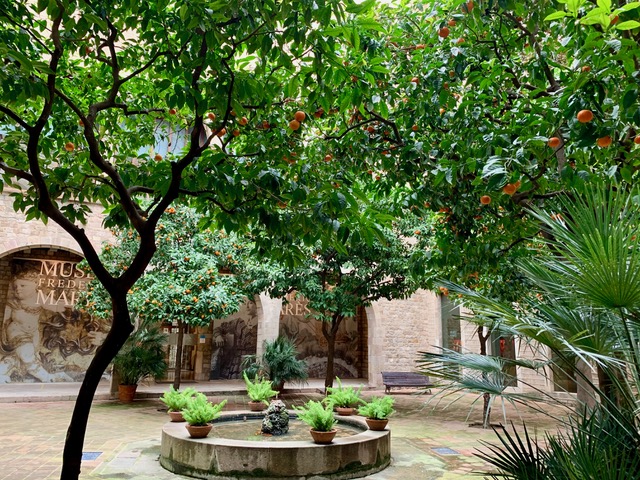Every time I walk the streets of Barcelona and see orange trees with fruits, I never cease to admire and be amazed that they grow so simply, in the city, blazing with orange balls of fruits, attracting the gaze of even locals who have long been accustomed to them. And what can we say about tourists! Against the blue background of the cloudless Spanish sky, these beautiful trees look like part of a bright, exotic picture created by nature itself.

The tradition of decorating streets and squares with citrus trees was brought to Spain by the Arabs at the beginning of the 8th century. Orange trees, which originated in Asia, adapted well to the southern Spanish climate. The Arabs did not stay long in the territory of today’s Catalonia and Barcelona, about 50 years. For one person’s life, this is a long time, but for history, it is a moment. But in the south of Spain, they were there for 8 centuries!
In spring, the air is filled with the sweet scent of azahar, the orange blossom, but… as always, there is a flip side to everything. Tons of bitter fruit, and this is the bitter, ornamental variety, that fall from the trees are a headache for the city’s cleaning department. The oranges look beautiful on the tree, but once they fall and are crushed, the streets become sticky with juice. Apparently, this is why the practical Catalans left a reasonable number of these trees in Barcelona, not turning it into an orange grove, like, say, in Seville, in southern Spain. And there they simply do not know how to get rid of tons of bitter oranges, which the Spaniards do not eat.
Marmalade
They are used to make marmalade, much of which is exported to Britain. Seville oranges are also a key ingredient in the famous liqueurs Cointreau and Grand Marnier.
Incidentally, the origins of marmalade are surrounded by myths and legends. The first handwritten recipe for marmalade was found in Dunrobin Castle in Sutherland in the Scottish Highlands in 1683. Legend has it that a ship carrying oranges from Spain took refuge from a storm in Dundee harbour, and local confectioner James Keiller was the first to find a use for the fruit. It may be a myth, but Keiller did produce the first commercial brand of marmalade in 1797.
Production of … electricity
And now, the juice from unwanted oranges has found a new use, using it as biomass: it will be used to produce… electricity. In Seville, Spain, an experimental scheme has begun to use methane produced as a fruit enzyme to generate clean electricity for the city’s waterworks.
An unexpected decision. And very beneficial for everyone.